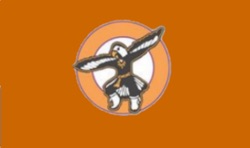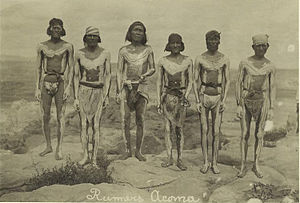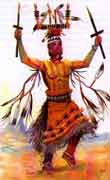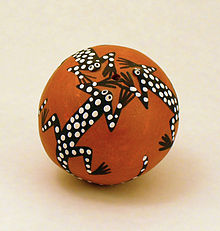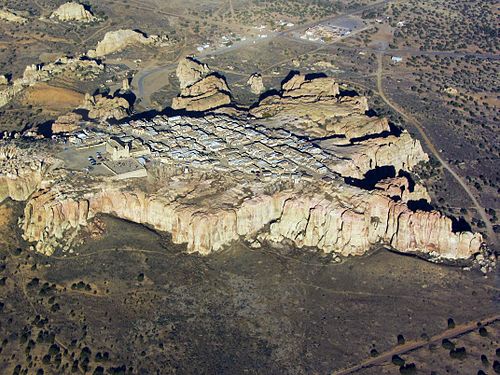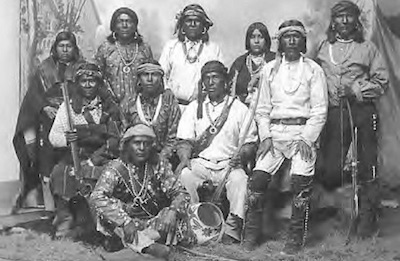Acoma/Laguna Pueblo
Literature
Stories
Blue Corn Maiden and the Coming of Winter
How the Turtle out hunting duped the Coyote
Origin of Summer and Winter (Acoma/Laguna)
Origin of Summer and Winter (ver. 1)
Origin of Summer and Winter (ver. 2)
The oldest tradition of the Acoma and Laguna peoples indicates
they lived on an island off the California Coast. Their homes
were destroyed by high waves, earthquakes, and red-hot stones
from the sky. They escaped and landed on a swampy part of the
coast. From there they migrated inland to the north. Wherever
they made a longer stay, they built a traditional White City,
made of whitewashed mud and straw adobe brick, surrounded by
white-washed adobe walls. Their fifth White City was built in
southern Colorado, near northern New Mexico. The people are
finally obliged to leave
there on account of cold, drought, and
famine.
Laguna, Spanish for "lake," refers to a large pond near the pueblo. The word "pueblo" comes from the Spanish for "village." It refers both to a certain style of Southwest Indian architecture, characterized by multistory, apartmentlike buildings made of adobe, and to the people themselves. The Pueblos along the Rio Grande are known as eastern Pueblos; Zuni, Hopi, and sometimes Acoma and Laguna are known as western Pueblos. The Lagunas call their pueblo Kawaika, "lake."
Laguna and Acoma Pueblo Indians organized and instituted a general revolt against the Spanish in 1680.
For years, the Spaniards had routinely tortured Indians for practicing traditional religion.
They also forced the Indians to labor for them, sold Indians into slavery, and let their cattle overgraze Indian land,
a situation that eventually led to drought, erosion, and famine. Pope of San Juan Pueblo and other Pueblo religious leaders
planned the revolt, sending runners carrying cords of maguey fibers to mark the day of rebellion. On August 10, 1680, a virtually
united stand on the part of the Pueblos drove the Spanish from the region. The Indians killed many Spaniards but refrained from mass slaughter,
allowing them to leave Santa Fe for El Paso.
![]() Return to Indigenous Peoples' Literature
Return to Indigenous Peoples' Literature
Compiled by: Glenn Welker
ghwelker@gmx.com
This page last updated 04/26/2016 18:56:53
This site has been accessed 10,000,000 times since February 8, 1996.
